If you were to ask the general public to define the breadth of structural engineering, how do you think they’d answer? “Buildings, bridges, and other things that stand up.” This may be a common answer, but it only scratches the surface of what structural engineering encompasses as well as the challenges involved in finding sustainable success in that area of our industry.
Structural engineering involves so much more than building things that stand up. It’s about enriching lives by creating an infrastructure that will remain a relevant part of the public’s future.
Structural Engineering Supports Us All
We asked our engineers what they thought structural engineering meant to the public. How do you strike a balance between durability and applicability? Their diverse experience resulted in some interesting answers.
Structural Engineering Greatly Serves the Public
Frederick Mensah, Structural Engineer, does much of the bridgework at our firm, and he’s incredibly committed to the safety that comes with structural engineering.
“The strength of every infrastructure project hinges on the services provided by a structural engineer. Public safety should always be guaranteed when a structural engineer is on an infrastructure project.”
Frederick goes on to note structural engineers aren’t just the people behind our buildings and our bridges. They’re also an integral component of building aircraft, dams, water tanks, and even sports stadiums. A structural engineer’s work is seen and felt everywhere.
“A structural engineer’s work is crucial to everyday life. They provide essential service to all levels of our industry. In addition to buildings and bridges, services rendered by structural engineers help to provide telephone services, television services, water, energy, and recreational activities, like sports, to the general public.”
Darin Lampley, Structural Design Manager, agrees the public impact provided by structural engineering is what makes it so important. “Structural engineering plays a significant role in providing public infrastructure to communities. At BFW/Marcum, we’re passionate about serving the community, and so I love being able to contribute in that way.”
Structural Engineering Has Influenced the World We Live In
Ron Bacon, Principal/Structural Engineer, exposits on how universal the need for structural engineering is in day-to-day life. “From my perspective, I don’t think you can name a single physical object in modern life that hasn’t been touched in some way by structural engineering. This would include raw materials, transportation, manufacturing, distribution, utilities, and any other aspect needed to create an object.”
As the world evolves and populations increase, so too does the infrastructure need to change to meet those new demands. Brad Rotherham, Senior Bridge Engineer/Project Manager, finds himself often thinking of how his job assists with that universal need. “In my opinion, structural engineering means efficiency. People enjoy more direct routes from point A to point B because of structures spanning or supporting waterways, roadways, and other human-made/natural obstacles.”
Phillip Holthaus, Structural Engineer/Project Manager, agrees with this sentiment, yet likes to focus on the aesthetic contributions that the field brings to the public. “Structural engineering provides shelter for the public and makes it possible for architects to uniquely frame the spaces where we live, work, and play.”
Our Legacy is Framed by Our Prowess
Good engineering firms are concerned with their legacy. With structural engineering, legacy isn’t about arrogance or ego; it’s about ensuring that what you create has a lasting positive effect on the people around it.
What’s Effective Today Needs to be Effective Tomorrow
Phillip often thinks of the legacy that he’s committed to leaving as a structural engineer.
“At BFW/Marcum, the buildings we are helping to design today will out-live us all for many generations to come. Our great-great-great-grandchildren should be able to attend a school that we designed. Or they should be able to work in an office building that we helped to create. Our firm takes pride in the community. It’s the very same community that we all work and live in.”
“We have great clients that we work for who challenge us to design great buildings. With that in mind, our work today will continue to impact these communities tomorrow.”
In Engineering, A Little Pride is a Good Thing
Brad Rotherham gives himself the time to be proud of his accomplishments as a structural engineer. A little pride is a good thing. It can keep you on the right path.
“I am genuinely proud of the effort we put into every project here at the firm. On every project, we work hard to give the client what they want and to get it right.”
“Also, we don’t rest on what we know. The engineers at BFW/Marcum are continually attending conferences, education seminars, and participating in training to stay up-to-date.”
It’s hard to find that perfect mixture of being proud of one’s work while still being challenged to do better and to learn more. Ron agrees with Brad: Well-placed pride is always a benefit when it’s tempered by diverse perspectives and experience. “I am proud of our ability to address unusual problems or circumstances that you wouldn’t see in day to day activities. This comes from a combination of experience, differing areas of education, and sometimes just imagination.”
Our Structural Engineers Have Designed Structures Throughout the United States
Our structural engineering team is all Licensed Structural Engineers (LSEs), and we offer the following structural engineering capabilities:
The Public’s Perception of Structural Engineering is the Tip of the Iceberg
Great structural engineering is effortlessly admired by the end-user. What the public sees may be the culmination of disciplines, hard work, and exceptional thinking, but the final result should do little to betray the mountainous scope of those efforts.
For Many Engineers, the Thrill is in the Journey, Not the Destination
Brad agrees that to truly master something, it needs to look easy to those who don’t know any better.
“As a Senior Bridge Engineer, I know full well the amount of coordination required in bridgework. Most bridges require cooperation between numerous professional disciplines, such as surveying, environmental, archeological, hydraulics, geotechnical, transportation, structural, construction, and materials.”
“I’m not even getting into the collaboration needed among the different governmental agencies, and the private parties such as the Federal Highway Administration, Army Corps of Engineers, state transportation departments, city and county governments, natural resource/wildlife/historical agencies, railroads, and private landowners. Protecting a vision amid the massive amount of back and forth involved in infrastructure of this scale is the real challenge.” Yet, all of those moving parts should worm in conjunction to power a much larger machine.
Phillip understands that most often the reward, as well as the challenge of an outstanding project, comes from behind the scenes, away from the public eye. “Structural engineering is more than just making a building stand up. Structural engineers must consider the owner’s desires, the architect’s vision, the constructability of the detailing, the serviceability of the design, and the sustainability for the end-user.”
When Details Matter, it’s Best to Sweat the Small Stuff
When many look at the Pyramids of Giza, the first questions would be the largest ones, “How did they transport those heavy granite blocks to their destination? Furthermore, how did they hoist them up into such an intricate arrangement?” Yet, a veteran engineer understands that most likely during their construction, those were the simple problems to solve even if the solution may be ambiguous to us today. With any feat of engineering, the real issues arise from the small stuff.
Ron Bacon is no stranger to the pitfalls of making assumptions or brushing away small issues. He’s seen it many times in the industry and has learned to avoid it. “With structural engineering as well as any other type of engineering, the first thing you have to do is ask questions. Things that may not seem significant to a building owner may have a profound effect on how the building is to be used now and in the future.”
As engineers, we’re meant to sweat the small stuff. The big problems most often come with simple solutions. With structural engineering, the devil’s in the details. At BFW/Marcum, we’ve always got our eye on them.
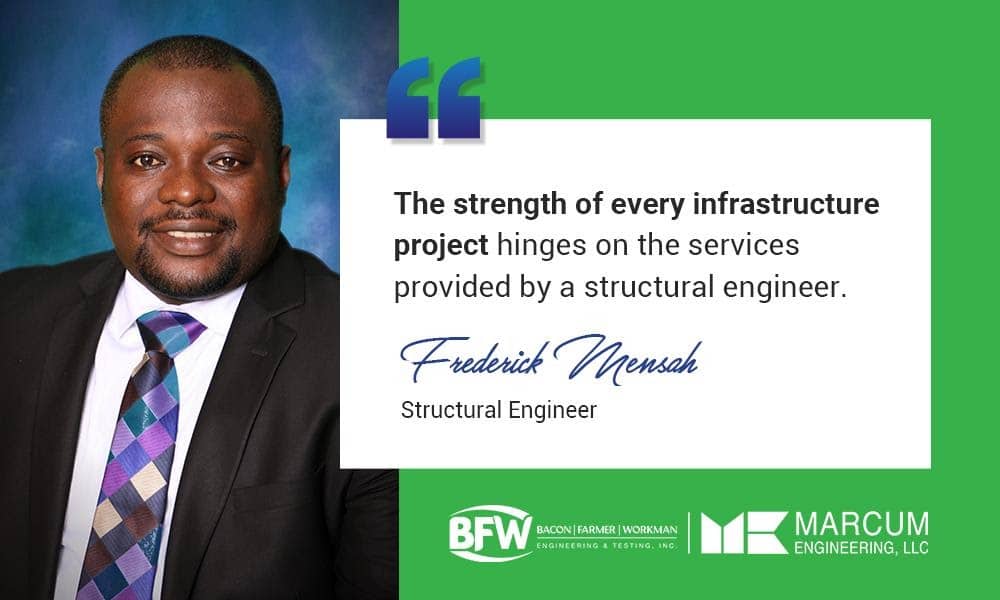
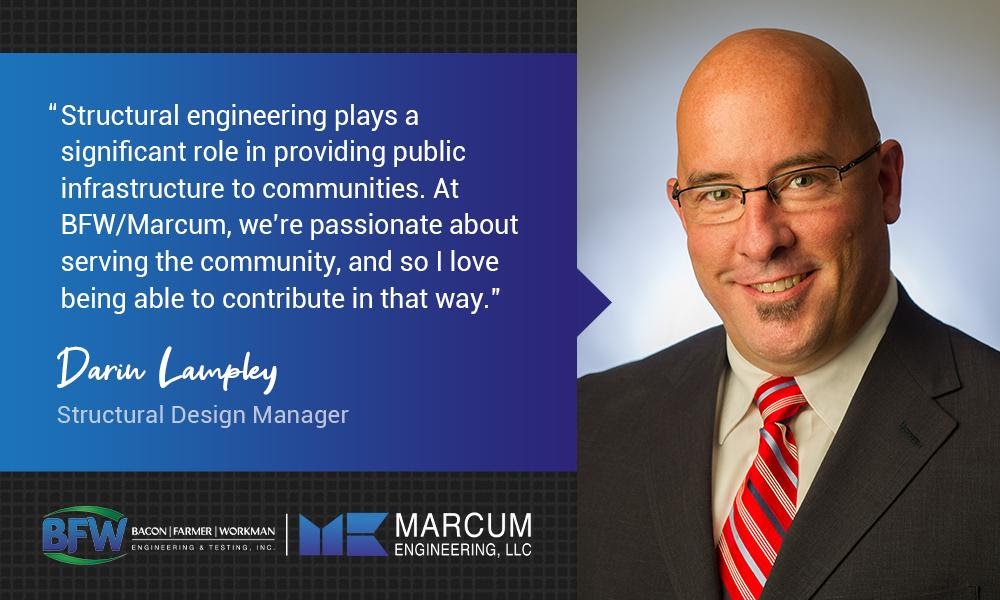

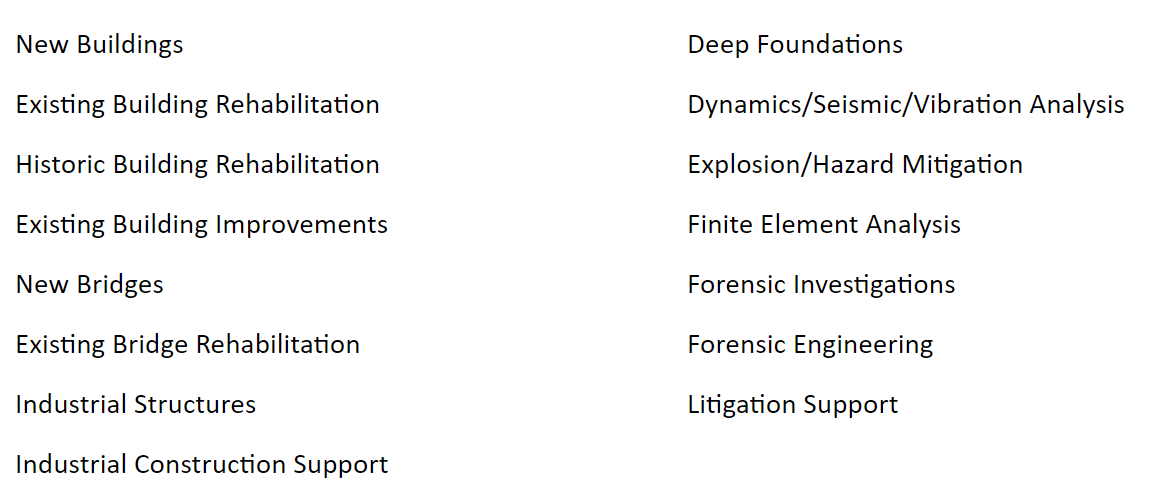
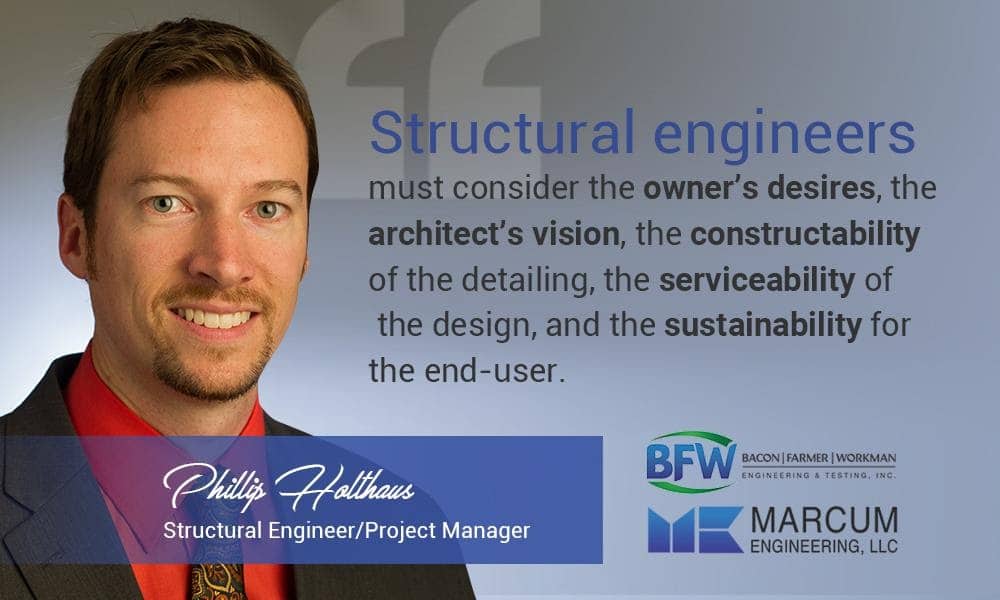
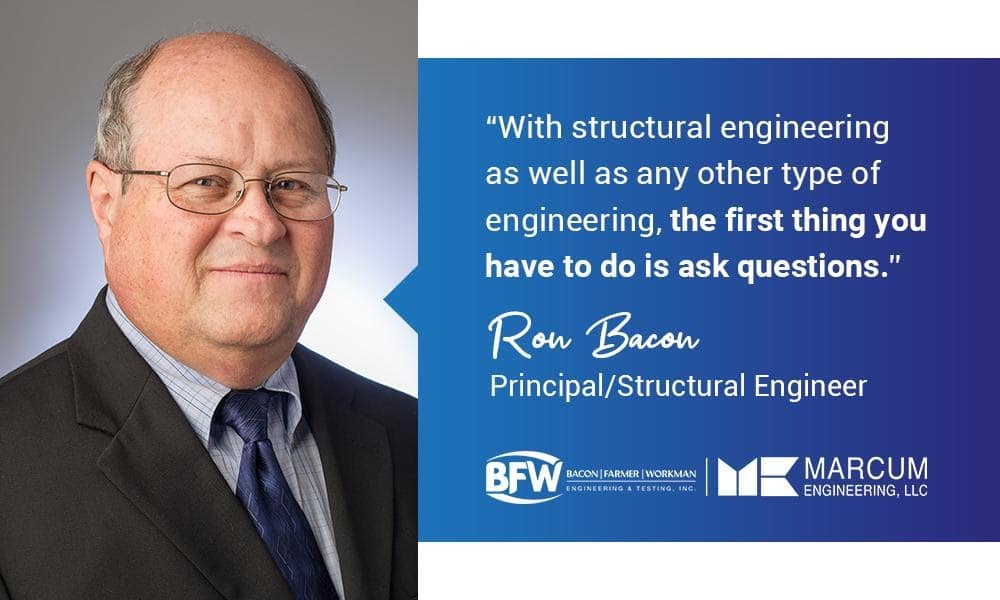
Recent Comments